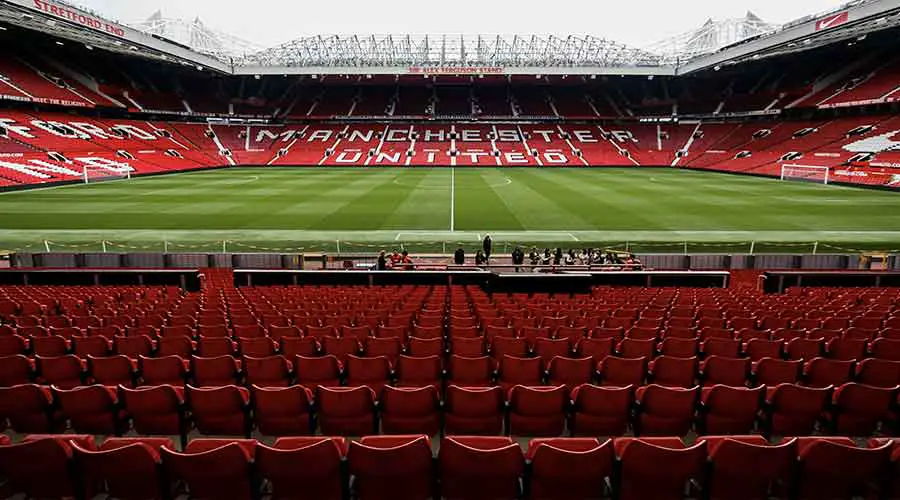Why is Old Trafford Called ‘The Theatre of Dreams’?
The Dawn of a Landmark
Imagine a massive, green field surrounded by an impressive structure that seems to shout, “Look at me!” with every brick. This is Old Trafford, a stadium that’s been standing proudly since 19th February 1910. It’s not just a stadium, but the heart of Manchester United and one of the most famous sports arenas in the world. But why do people call it ‘The Theatre of Dreams’? Let’s dig into its history and explore this iconic place to find out.
To give a short answer right away, the nickname was given by the legendary Sir Bobby Charlton who said “This is Manchester United football club, this is the theatre of dreams.”
Old Trafford wasn’t just built, it was boldly created. Back then, Manchester United was funded by John H Davies, a wealthy businessman who loved the club. He didn’t hold back in spending to create a top-notch stadium. The result? A stunning 16-acre structure in Trafford Park that cost £60,000 – twice the original budget. But it wasn’t just the impressive outer look that amazed people; it was the special features inside.
Archibald Leitch, a famous architect known for designing football stadiums in the early 20th century, planned a maze of tunnels leading to big terraces with steel barriers. No matter where fans stood, they had a great view of the game. But Leitch didn’t stop at designing the stands; he also cared about the pitch. He made sure the field had the right drainage, got enough sunlight, and had a good airflow. Thanks to him, the pitch was so perfect that The Umpire magazine called it a ‘beautiful green plush carpet’.
Rising from the Ashes
Like a phoenix, both Old Trafford and Manchester United have proven their resilience time and again. The stadium, used for storing military stuff during World War II, was nearly destroyed by German bombs on 11 March 1941. Despite this big hit, the stadium was rebuilt and reopened for the 1949-50 season, showing the strong spirit of the club and its fans.

A History of Success
Manchester United started as a small team, Newton Heath LYR Football Club, in 1878. It’s now a big name in football. The journey wasn’t always easy, with the club almost going broke in 1902 before being saved by John H Davies. Despite these hard times, the Red Devils rose up, becoming a top team in English and European football for many years.
Old Trafford, the club’s home, has seen all the good and bad times. It’s where famous managers like Sir Matt Busby and Sir Alex Ferguson created some of the most exciting moments in football history.
More Than Just a Pitch
Old Trafford isn’t just a football ground. It’s a place that has hosted a range of events, from rugby matches to Rolling Stones concerts. It’s welcomed big international games, including matches in the 1966 World Cup and the European Championships in 1996, and the big Champions League final in 2003.
The Theatre of Dreams
So, why is Old Trafford called ‘The Theatre of Dreams’? Sir Bobby Charlton, one of Manchester United’s best players, came up with this name. It fits perfectly. It’s here, on this special pitch, where many dreams have come true. It’s a place where the cheering of the crowd can turn regular players into legends, and where every goal, save, and tackle becomes part of football history.
Even now, as Old Trafford is showing its age and needs some updates, it still has a unique charm. The atmosphere of this famous stadium is something that no new, shiny stadium can match.
The Heart of Manchester United
Today, Old Trafford stands as a symbol of success, showing Manchester United’s strong history. It’s an icon of the game, a symbol of the city, and most importantly, the home that has nurtured the dreams of countless footballers and fans alike.
Conclusion: A Dream Factory
So, that’s the story behind why Old Trafford is called ‘The Theatre of Dreams’. It’s more than just a nickname; it captures the spirit of a stadium that has seen dreams become reality, heroes rise, and a legacy built on ambition, resilience, and passion. This ‘Theatre of Dreams’ continues to inspire, enchant and thrill, showing the magic that is Manchester United.
